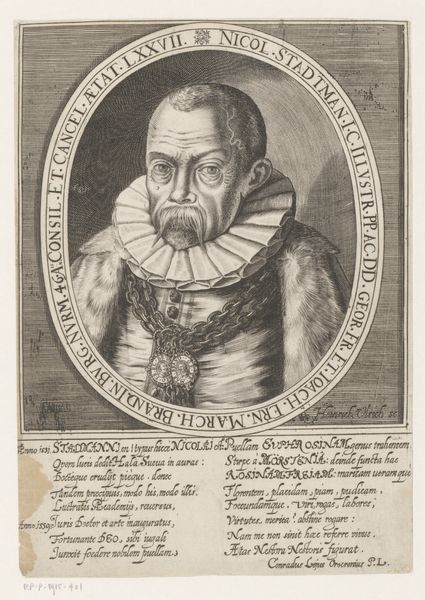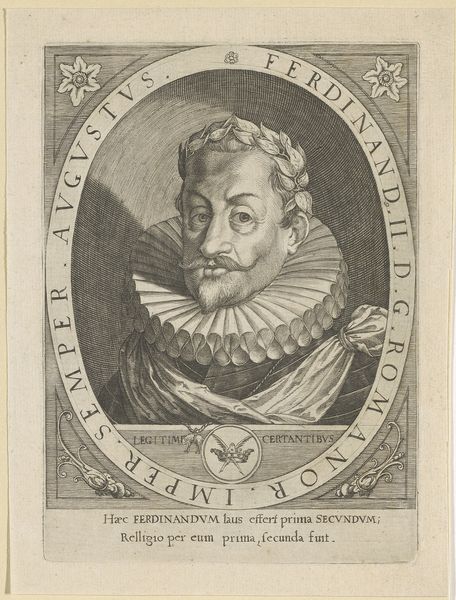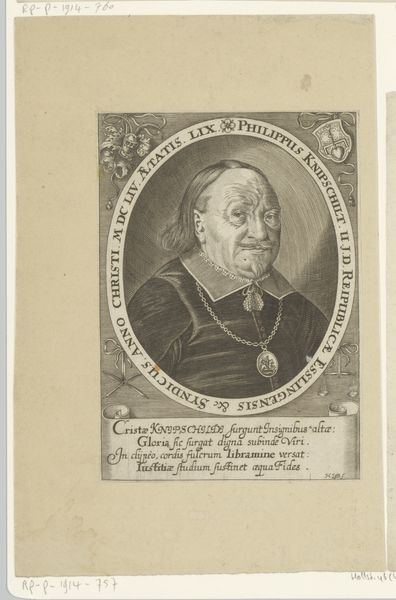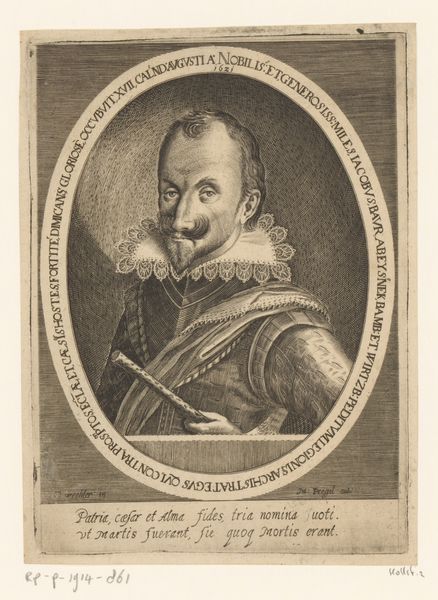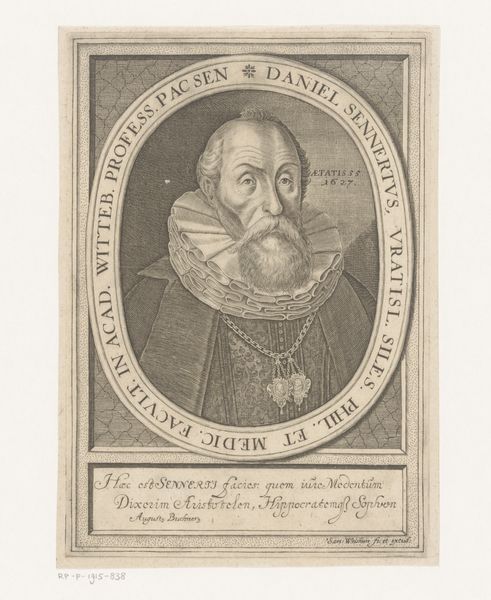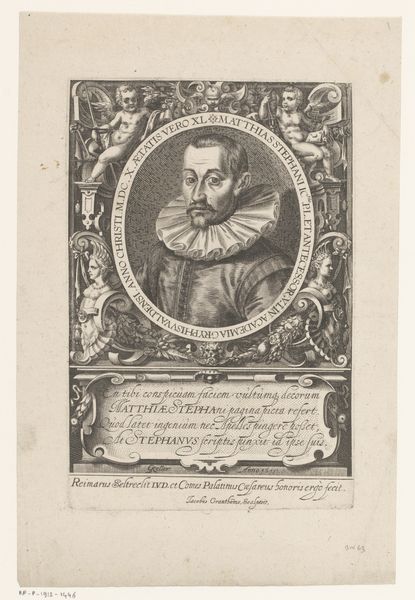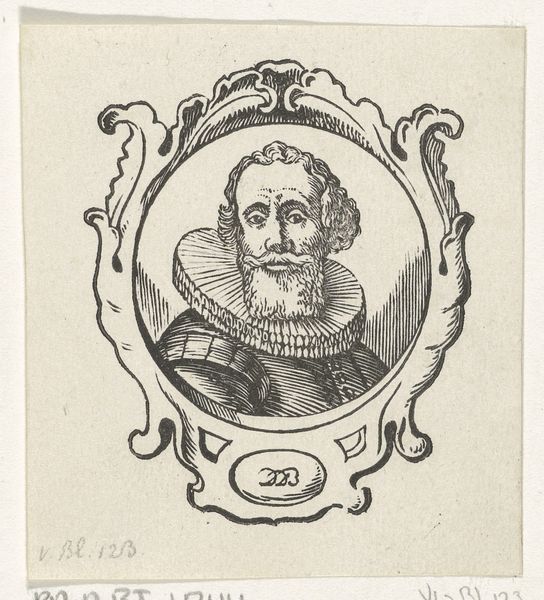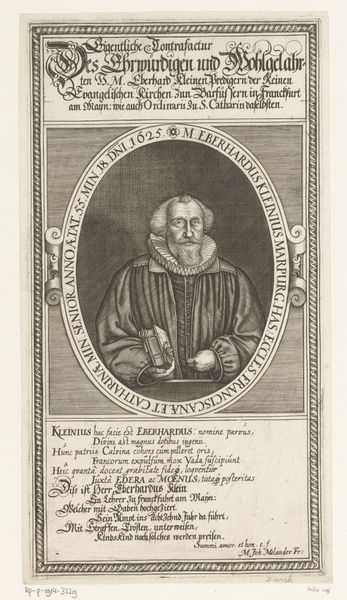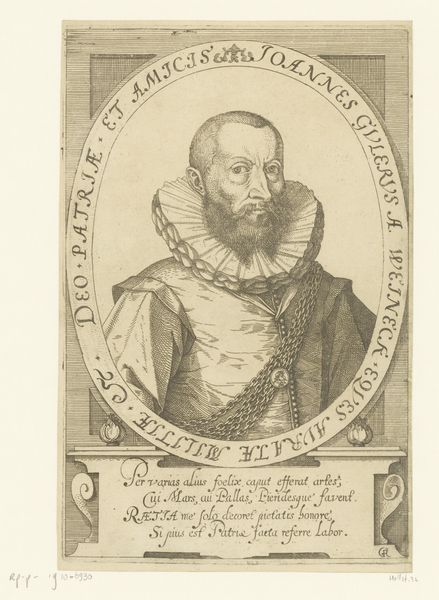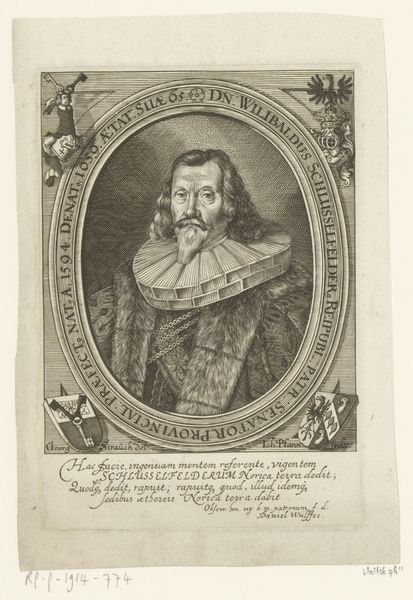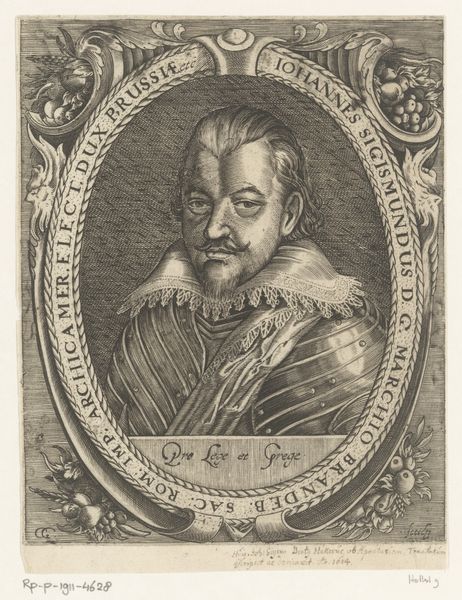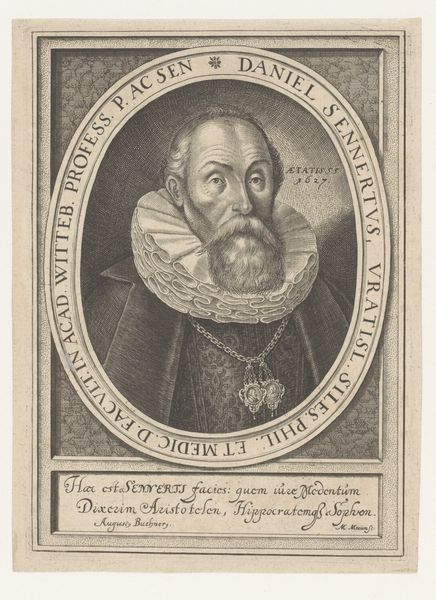
print, engraving
#
portrait
#
baroque
# print
#
old engraving style
#
traditional media
#
caricature
#
figuration
#
history-painting
#
academic-art
#
engraving
Dimensions: height 180 mm, width 126 mm
Copyright: Rijks Museum: Open Domain
Curator: What strikes me first about this image is the commanding presence conveyed through the subject's gaze, which draws us in immediately. Editor: And the collar! It's like a visual barrier, isn't it? An almost cartoonish expression of power. There is certainly no space-sharing happening in this composition. Curator: Indeed. What we are looking at here is a print, "Portret van Ferdinand II", an engraving created around 1641 by Sebastian Furck. Look at how Furck utilized engraving to bring a figure from history to life, and consider what symbols might be encoded here. Editor: Semiotically, the frame is fascinating. The text creates an almost claustrophobic border, highlighting Ferdinand’s titles: note that “Imperator Semper Augustus” translates to “Emperor, always majestic". It hems him in and suggests a prison of power, perhaps. Curator: Precisely. That border can also be seen as a halo—a visual link back to religious iconography and the divine right of kings, further bolstered by "Dei Gratia", meaning "By the Grace of God." Think of the tumultuous historical moment: the Thirty Years' War raging during Ferdinand II's reign. Images like these weren’t simply portraits, they were strategic assertions of legitimacy. Editor: So you're suggesting the symbolism intends to assert legitimate power through both secular and sacred iconography? But isn’t there something almost... satirical about the overall effect? The heavy brow, the exaggerated collar—almost comical in its grandeur. Curator: It's a fascinating point. Satire wasn't always about overt ridicule; it often operated within the confines of established forms. This might subtly be critiquing, or at least complicating, the image of imperial authority at a time of intense social and political upheaval. The print medium also is an interesting point here. It facilitated a widespread dissemination of this complex representation of Ferdinand II during the war, enabling people to engage, question, and critique the image and, by extension, the authority of the empire. Editor: Looking again, it's the artist’s restraint with line, juxtaposed with the overall ornate effect, that now fascinates me most. Thank you for pointing out some of those social dynamics. Curator: Of course. The beauty here resides not just in the artistic rendering, but in how this portrait speaks volumes about power, belief, and even perhaps a bit of irony in the midst of historical crisis.
Comments
No comments
Be the first to comment and join the conversation on the ultimate creative platform.
